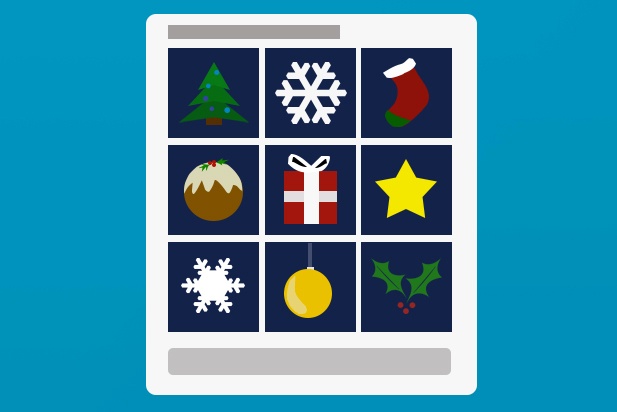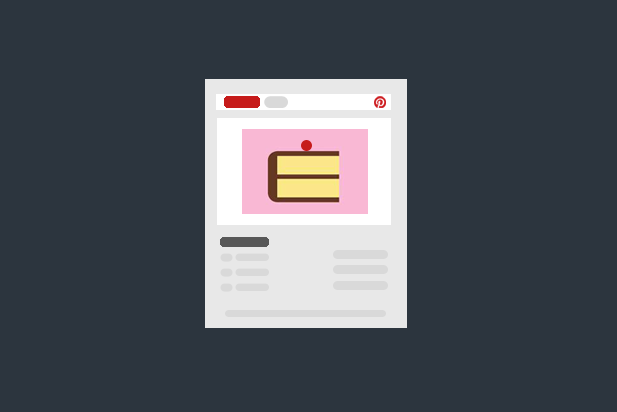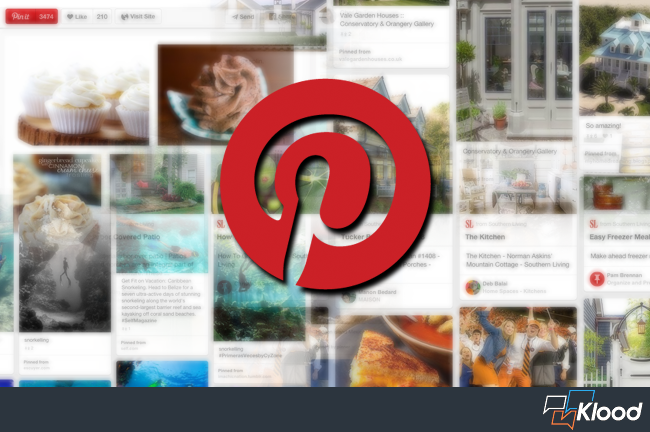
Get weekly
HubSpot updates
Originally thought of as the channel of choice for cat lovers, cupcakes bakers and wannabe brides, Pinterest has come a long way since it first appeared on our social media radars. With over 2.5 billion monthly page views Pinterest is now a very serious contender for other social media giants currently ruling the digital marketing playground. In fact, Pinterest is currently ranked the fourth most popular social networking site, and it’s no longer just for recipe sharers and aspiring fashion bloggers. OK so I’m not telling you anything new here, howeveryou may, or may not be surprised to hear that recent studies have shown that Pinterest now commands upwards of 41% of e-commerce traffic from social networking sites. But what does this mean for you? Well if you’re a business it’s time to look further afield than Facebook and Twitter – it’s time to get pinning!
However, as a word of warning, whilst the vast of majority of businesses with the right amount of time and effort can create a successful Pinterest page, it’s certainly not a channel for the faint hearted. Don’t wade into Pinterest expecting overnight social media success (does that even exists?), you need to apply time, dedication and a little patience, and of course have a bank of unique content to hand (don’t even think about reaching for stock images). However don’t despair here’s a strategy to get you started.
Just like every other channel – you need a strategy
And this starts with a story - your brand’s story. We all know that the greatest of tales can lose their impact if they told in an uninspiring way and the same principle can be applied to Pinterest. Your brand will only make an impact if you tell your story right – which so many brands currently get wrong. As the link between revenue and social marketing is more direct on Pinterest brands often focus on their products and therefore miss out on all the other rich content at their fingertips, which is the true value of the platform. Instead adopt a softer approach (yes, just like inbound marketing!) that allows your stories promote your products but also be representative of an overall lifestyle that your followers will aspire to. This will also allow your stories to remain consumer centric and on brand.
If every great love starts with a great story, every great pin should start a great aspiration
Overall think of your boards as stories and each one must tell a tale that invites your followers to want to ‘read more’. After all the chances are; if your followers aspire to the lifestyle, they’ll buy the product.
Content blend is just as important on Pinterest as on any other Channel
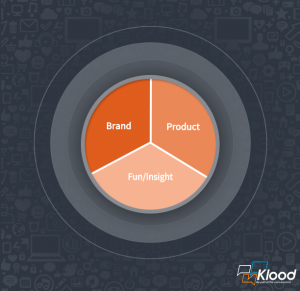 The social media 'rule of thirds' refers to content which is a mixture of being branded, product-based and also fun/insightful.
The social media 'rule of thirds' refers to content which is a mixture of being branded, product-based and also fun/insightful.
You’ve established your story; it’s now time to think about the plot. The best-loved stories are always those that go beyond the surface and detail the unexpected. This is also true for the most successful Pinterest boards. If you focus on ‘you, you you’ the depth of your board’s content will be superficial and as a result uninspiring to followers (expect less conversions here). We’ve all met that guy at a party who loves nothing more but to talk about himself, leaving you feeling irritated and desperate to make your excuses to escape. Don’t be that guy, particularly on Pinterest. Instead pepper your stories with product related content and blend with content from other sources, whether that is through the use of re-pins or un-product related content.
Don’t just focus on the theme of your content blend, but the medium. Pinterest isn’t just for pretty pictures, videos and quotes can also add dimension to your content blend. Videos and quotes also really stand out in a search against a vast amount of images and therefore are more likely to get noticed and interacted upon.
Story – check. Content blend – check. Pinnability – is that even a word?
Well if it isn’t, it is now! Once you have curated your story and established your content blend it’s time to assess how ‘pinnable’ your content actually is. Why you might ask? Well we all know that the ultimate goal is to drive traffic from your page to your website which results in conversions. The more likely you are to gain followers, the more likely your Pinterest content will receive interactions, whether that be re-pins and/or comments. Which in turn should result in an increase in conversions. In short – it is essential to ensure that your content is optimised in order to encourage interactions, which boils down to my invented metric that I am referring to as ‘pinnability’. So what exactly is ‘pinnability’? This is a measurement of how likely your pins are to be repined or commented on. The more optimised your content the more pinnable it will be, and then you’re well on your way to an epic Pinterest page.
Creating pinnable content – a simple check list…
We all know that we shouldn’t expect followers to come to us - therefore make it easy for your brand to be found. Every marketer knows that your pin description should never be left blank, even if you are re-pinning. You know your keywords, so make sure you list them!
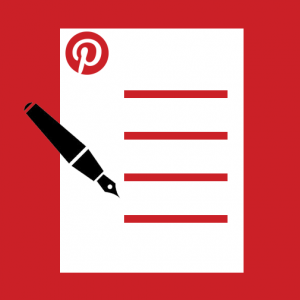 It’s all in the timing - just like any other social media channel Pinterest also has peak audience times. However unlike Facebook or Twitter these peak times are far less spread out and the weekend (Saturday morning to be precise) is when you’ll find the majority of pinning happening. Although, just like Facebook et al the best time to pin is when your audience will see it, which of course will be unique to your brand and your audience. No matter what be prepared to experiment, test out different days and times and analyse which produce the best results. However don’t spend too long obsessing over posting at the right time as Pinterest users tend to scroll down their Home Feeds every time they log in (I bet you’re a scroller too!) until they spot content they have already seen. Therefore make timing a consideration rather your top focus.
It’s all in the timing - just like any other social media channel Pinterest also has peak audience times. However unlike Facebook or Twitter these peak times are far less spread out and the weekend (Saturday morning to be precise) is when you’ll find the majority of pinning happening. Although, just like Facebook et al the best time to pin is when your audience will see it, which of course will be unique to your brand and your audience. No matter what be prepared to experiment, test out different days and times and analyse which produce the best results. However don’t spend too long obsessing over posting at the right time as Pinterest users tend to scroll down their Home Feeds every time they log in (I bet you’re a scroller too!) until they spot content they have already seen. Therefore make timing a consideration rather your top focus.
Strike a balance of frequency - it’s important to be a strategic marketer but you must also be a consistent one. As a general rule humans respond well to routine, and the same goes for Pinterest users. Pinning regularly ensures that your brand is always visible to your followers and will encourage your followers to check out your latest updates. When your activity is always present, so are your brand and your products. However the age-old saying still applies here ‘quality over quantity’. Need I say more?
